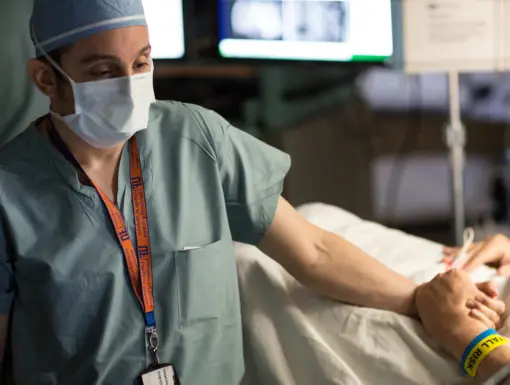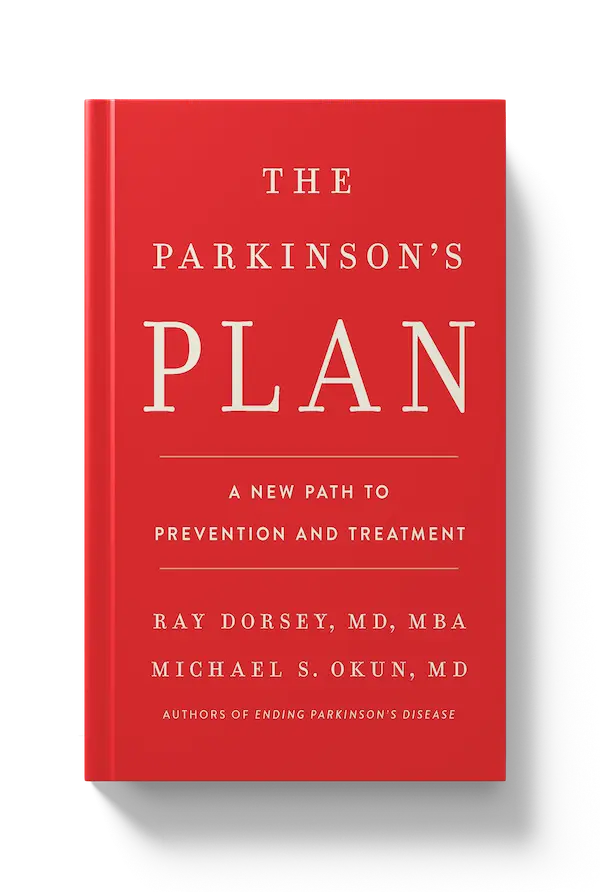Guided by the sun: Michael Okun’s bold vision for a Parkinson’s-free future
University of Florida neurologist Michael Okun and the Fixel Institute are redefining what’s possible for people with Parkinson’s disease.
When Dr. Michael Okun began treating people with Parkinson’s disease, he realized medicine too often focused on symptoms instead of stories. He wanted to understand not just what patients were losing but what they hoped to keep, like their independence, laughter, movement and time with loved ones.
That focus on the person, not the diagnosis, would shape an entirely new model of care — one that’s now being studied and shared around the world.
“The patient is the sun,” Okun says. “Everything else, including care teams, research, even support systems, revolves around that person. That’s how we make real progress.”
The Fixel model: team-based, patient-centered, global
As executive director of the Norman Fixel Institute for Neurological Diseases at UF Health, Okun leads a care and research program that has become a model for the world. When he and UF neurosurgeon Dr. Kelly Foote co-founded the university’s movement disorders program more than two decades ago, they envisioned something revolutionary: a place where neurologists, neurosurgeons, health care professionals, therapists and researchers could collaborate seamlessly around the patient.
 Today, that vision is reality. At the Fixel Institute, people with Parkinson’s and other complex neurological disorders can see multiple specialists in a single coordinated visit. Conversations that once unfolded over months now happen in a day. Researchers and clinicians share discoveries in step with patient care, shortening the path from research to real-world results.
Today, that vision is reality. At the Fixel Institute, people with Parkinson’s and other complex neurological disorders can see multiple specialists in a single coordinated visit. Conversations that once unfolded over months now happen in a day. Researchers and clinicians share discoveries in step with patient care, shortening the path from research to real-world results.
The outcome is a truly comprehensive system where every decision, from surgery to rehab to speech therapy, reflects the patient’s goals and values. Health systems from more than a few dozen countries have visited UF to learn from this model and bring it home.
“The patient-is-the-sun model has been adopted by others establishing their own centers of excellence,” Okun says. “We’re proud of that because it’s a great concept.”
Beyond treatment: understanding cause and prevention
Once considered a disorder to manage, Parkinson’s is now understood as a condition that might one day be prevented, thanks in part to Okun and his colleagues. That vision is at the heart of “The Parkinson’s Plan: A New Path to Prevention and Treatment,” the latest book from Okun and longtime collaborator Dr. Ray Dorsey, which quickly became a New York Times bestseller. 
Drawing from decades of patient care and research, the book calls for a bold global commitment to prevention, research and equitable access to care.
“There are now about 12 million people with Parkinson’s disease,” Okun says. “In 2020, we thought we wouldn’t reach that number until 2035. But here we are, 10 years early, and the shocker is Parkinson’s is growing faster than Alzheimer’s.”
He emphasizes that “diseases have causes,” and that finding and fixing those causes is essential. The authors of “The Parkinson’s Plan” call for leveling off the rise in Parkinson’s cases by 2035 through environmental changes, a tenfold increase in research investment and what they term “dopamine for all.”
Dopamine replacement, which addresses the core chemical deficiency in the brain caused by the disease, is one of the most effective therapies, and it costs only pennies, yet fewer than half of patients worldwide receive it.
“Prevention and access go hand in hand,” Okun says. “We have to make sure everyone who needs care can get it.”
Researchers at UF and across the globe are also uncovering how pesticides, industrial toxins and air pollution contribute to Parkinson’s, and how exercise, diet and sleep may slow its progression or reduce risk altogether. This growing evidence base, Okun says, points to an urgent global call for prevention.
The Parkinson’s universe
Okun’s latest framework — what he calls the Parkinson’s universe — weaves together two decades of science and humanity. The patient remains the focus, but the new model has a broader perspective.
- The patient is the sun and the center of the universe.
- Mercury represents the caregiver and communication, including the open, honest dialogue between doctor and patient.
- The planets are the orbiting care team members working in concert along with other persons with Parkinson’s disease also providing support.
- Pluto is stigma, distant but still orbiting and something we need to urgently address.
- The stars are families and support groups, which serve as constant sources of hope.
- The satellites represent advances in telemedicine and remote monitoring.
- The asteroid fields are obstacles such as insurance, access and cost.
“Our job,” Okun says, “is to move the chess pieces effectively; to walk with patients from diagnosis to discovery and to make sure they never walk alone.”
He credits the University of Florida’s culture of collaboration for making this vision possible.
“To build what we’ve built — a kind of MD Anderson or Sloan Kettering for Parkinson’s — you need the right people, the right culture, the right place. We have that here.”
Okun is quick to note that his role is just one piece of a larger system that includes scientists, therapists and patients contributing daily to discovery.
“Every day I practice medicine, I realize I know a little less than I thought I did,” he says. “I tell my patients to consider me their cabinet advisor. I’m here to help them on their journey, but the decisions are their own.”
A future defined by hope
Okun’s motivation remains deeply personal. Every day, he meets people who remind him why the work matters and why the future looks brighter than ever.
“I look at people living with Parkinson’s and think, we can do better,” he says. “If we invest in prevention now, the next generation might be spared.”
At the University of Florida, that hope is becoming reality — one patient, one plan and one discovery at a time.
“When you walk into Fixel,” Okun says, “every person you meet, from a researcher to a clinician or therapist, is on your side. We walk the road with you. From diagnosis to treatment to prevention. That’s the plan.”
